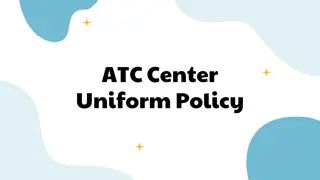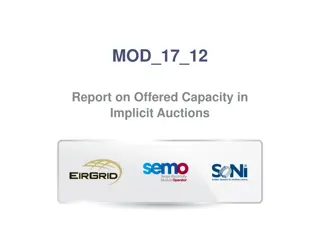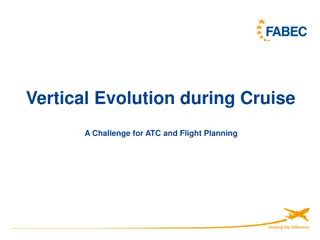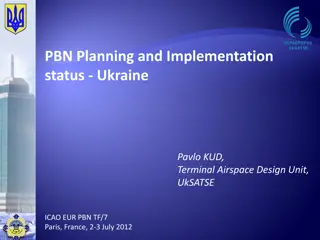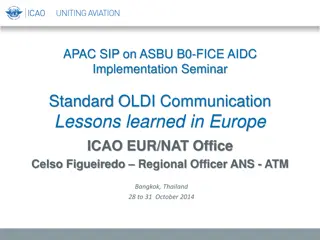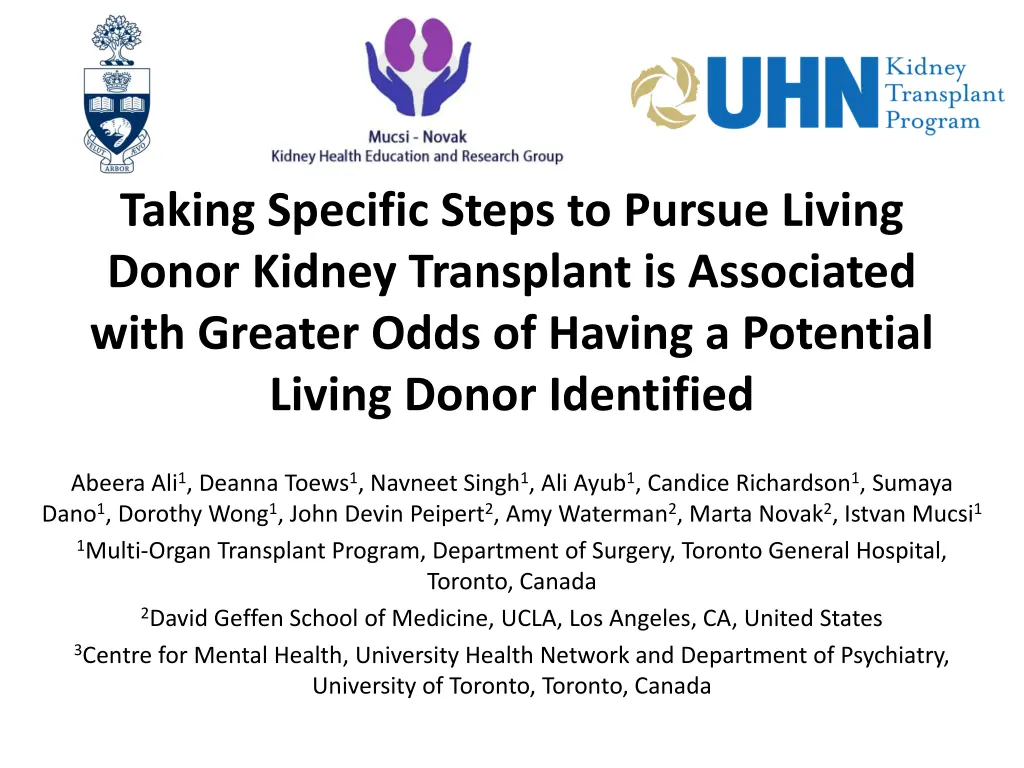
Pursuing Living Donor Kidney Transplant Steps
Identifying potential living donors for kidney transplants can be boosted by taking specific steps to pursue the transplant process. This study explores the relationship between proactive actions by patients and the likelihood of having a living donor identified. A cross-sectional sample of patients with End-Stage Kidney Disease in Toronto was analyzed to assess the impact of pursuing living donor kidney transplants on donor identification.
Download Presentation

Please find below an Image/Link to download the presentation.
The content on the website is provided AS IS for your information and personal use only. It may not be sold, licensed, or shared on other websites without obtaining consent from the author. If you encounter any issues during the download, it is possible that the publisher has removed the file from their server.
You are allowed to download the files provided on this website for personal or commercial use, subject to the condition that they are used lawfully. All files are the property of their respective owners.
The content on the website is provided AS IS for your information and personal use only. It may not be sold, licensed, or shared on other websites without obtaining consent from the author.
E N D
Presentation Transcript
Taking Specific Steps to Pursue Living Donor Kidney Transplant is Associated with Greater Odds of Having a Potential Living Donor Identified Abeera Ali1, Deanna Toews1, Navneet Singh1, Ali Ayub1, Candice Richardson1, Sumaya Dano1, Dorothy Wong1, John Devin Peipert2, Amy Waterman2, Marta Novak2, Istvan Mucsi1 1Multi-Organ Transplant Program, Department of Surgery, Toronto General Hospital, Toronto, Canada 2David Geffen School of Medicine, UCLA, Los Angeles, CA, United States 3Centre for Mental Health, University Health Network and Department of Psychiatry, University of Toronto, Toronto, Canada
Background Many patients with End-Stage Kidney Disease (ESKD) who are eligible for Living Donor Kidney Transplant (LDKT) will not receive it. When planning interventions to increase living donor kidney transplant (LDKT), it is important to understand what actions patients can take that are associated with an increased chance of identifying potential living donors (PLD) Physicians can encourage patients to become more proactive in pursuing LDKT by suggesting to take these small steps to identify a PLD To our knowledge, no published studies have assessed the relationship between taking steps to pursue LDKT and the likelihood of having a PLD identified. We explored if patients who were willing to take actions to pursue LDKT are more likely to have a PLD identified or have received an offer for living donation.
Purpose Question: Do patients have a higher likelihood of having a potential living donor identified if they are actively taking actions to pursue LDKT? Do patients have a higher likelihood of receiving an offer of live kidney donation if they are actively taking actions to pursue LDKT? Hypothesis: Patients are more likely to have a potential living donor identified if they are actively taking actions to pursue LDKT Patients are more likely to receive an offer of live kidney donation if they are actively taking actions to pursue LDKT
Methods I Patients Considered (n=654) Cross-sectional, convenience sample of patients with ESKD (>18 years) from several renal programs in Toronto between September 2015 to November 2017. Cognitive dysfunction or severe acute illness hampering questionnaire completion Unable to read/understand grade 5 English Unwilling to provide consent Exclusion Criteria (n=243) Final Cohort (n=411)
Method II Used an a tablet-based electronic data capture system (DADOS, Techna Institute, UHN, Toronto, Ontario) to assess: demographic characteristics transplant knowledge score (0-19, based on correct answers to kidney transplant related questions) steps that had been taken to pursue LDKT (have done/have not done yet) if participant had at least one potential living donor identified (yes/no) if anyone offered to be a living donor for the participant? (yes/no) All data was self-reported Univariable and multivariable logistic regression was used to analyze the association between religio-cultural groups and outcome variables in STATA14.
Results Table 1: Participant Demographic Characteristics Characteristic Total n (%) 411 (100) Mean age (Standard Deviation (SD)) 57 (13) Sex n (% male) 249 (61) Martial Status n (% in domestic partnership) 189 (47) Education n (% >12 years) 281 (73) Ethnic Background n (%) White Black Asian Other 166 (40) 123 (30) 78 (19) 44 (11) Median years on dialysis (IQR) 2.1 (1.0-5.1) Diabetes n (% yes) 195 (49)
Table 2: Exposure & Outcome Variables Characteristic Total n (%) Exposure Variables: Asked potential donor directly to be tested for eligibility (yes) Allowed others to share your interest in pursuing LDKT (yes) Shared LDKT education material (yes) Spoken to family or friends about possibility of LDKT (yes) Generally talked to people about your interest in LDKT (yes) Sent a letter or email about your interest in LDKT (yes) Shared need for living donor with a large community (yes) 70 (19) 94 (26) 106 (28) 208 (53) 116 (31) 26 (7) 19 (5) Outcome Variables: Potential living donor identified (yes) Received an offer for living donation (yes) 155 (42) 188 (48)
Table 3: Logistic regression estimating association between exposure and having a potential living donor identified Exposure Model Results OR CI P-Value Asked potential donor directly to be tested for eligibility 1 13.54 6.47-28.31 <0.001 2 10.99 4.94-24.44 <0.001 Allowed others to share your interest in pursuing LDKT 1 8.23 4.80-14.09 <0.001 2 5.89 3.25-10.65 <0.001 Shared LDKT education material 1 2.94 1.84-4.69 <0.001 2 1.99 1.15-3.43 0.013 Spoken to family or friends about possibility of LDKT 1 9.03 5.25-15.53 <0.001 2 7.14 3.96-12.87 <0.001 Model 1: Univariable; Model 2: Model 1+ age, sex, education, ethnicity, marital status, transplant knowledge Reference: Have not done yet (each exposure)
Table 3: Logistic regression estimating association between exposure and having a potential living donor identified (continued) Exposure Model Results OR CI P-Value Generally talked to people about your interest in LDKT? 1 3.43 2.14-5.50 <0.001 2 2.49 1.42-4.34 0.001 Sent a letter or email about your interest in LDKT 1 4.25 1.73-10.40 0.002 2 2.81 1.03-7.66 0.043 Shared need for living donor with a large community 1 4.16 1.42-12.12 0.009 2 2.83 0.87-9.27 0.085 Model 1: Univariable; Model 2: Model 1+ age, sex, education, ethnicity, marital status, transplant knowledge Reference: Have not done yet (each exposure)
Table 4: Logistic regression estimating association between exposure and having received an offer for living donation Exposure Model Results OR CI P-Value Asked potential donor directly to be tested for eligibility 1 9.98 4.83-20.64 <0.001 2 7.59 3.50-16.48 <0.001 Allowed others to share your interest in pursuing LDKT 1 7.39 4.15-13.14 <0.001 2 5.03 2.72-9.30 <0.001 Shared LDKT education material 1 2.90 1.81-4.64 <0.001 2 1.82 1.07-3.08 0.027 Spoken to family or friends about possibility of LDKT 1 8.08 5.06-12.89 <0.001 2 5.66 3.37-9.47 <0.001 Model 1: Univariable; Model 2: Model 1+ age, sex, education, ethnicity, marital status, transplant knowledge Reference: Have not done yet (each exposure)
Table 4: Logistic regression estimating association between exposure and having a potential living donor identified (continued) Exposure Model Results OR CI P-Value Generally talked to people about your interest in LDKT? 1 2.34 1.46-3.72 <0.001 2 1.36 0.79-2.34 0.266 Sent a letter or email about your interest in LDKT 1 3.61 1.31-10.00 0.014 2 2.07 0.69-6.26 0.195 Shared need for living donor with a large community 1 2.30 0.87-6.08 0.094 2 1.22 0.41-3.58 0.722 Model 1: Univariable; Model 2: Model 1+ age, sex, education, ethnicity, marital status, transplant knowledge Reference: Have not done yet (each exposure)
Conclusion Patients who have actively taken steps to pursue living donation are more likely to have a potential living donor identified or to have received an offer for living donation compared to those who have not taken these steps Future research will be needed to identify the potentially modifiable barriers to taking these steps and to develop interventions to help patients explore the optimal treatment for ESKD
Limitations Small Sample Size: Our statistical analyses had low power due to the small patient sample Cross-sectional design of study: we are unable to establish any causal relationships English questionnaire: were not able include any non-English speaking patients in the study, which may bias our sample Self-reported questionnaire: The questionnaires were all self-reported thus there may be elements of social desirability bias
Disclosures There are no conflicts of interest relevant to this poster presentation










